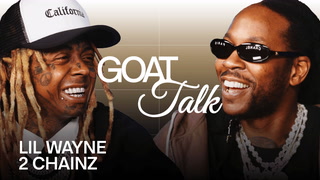Supreme’s Original Design Team: How The Brand Came To Be
Written by SOURCE on April 1, 2020
Having a major clothing brand was never something James Jebbia, Supreme’s founder, envisioned. When he opened Supreme’s doors in April of 1994 it was one of the only skateboard shops in SoHo, and he wanted to create a clubhouse for New York’s budding skateboard scene downtown. The shop was conveniently located near iconic skate spots like the Astor Place cube and the Brooklyn Banks. Customers could get their skateboards setup, or buy hardware and apparel from skate brands like Zoo York and Shorty’s. Supreme did have some branded apparel. The store launched with three T-shirts: one featuring an image of Robert Deniro from Taxi Driver, another showcasing a photo of a skater with an afro, and one with the store’s much coveted box logo—only 60 of each were made. But there weren’t any Gore-Tex jackets, quirky accessories or mohair cardigans—the pieces that have become synonymous with its coveted drops.
So how did Supreme become the apparel company that collaborates with French fashion houses like Louis Vuitton and Jean Paul Gaultier? It all started with a Japanese businessman named Ken Omura who runs the distribution company OneGram in Japan. Japanese consumers were enamored with Supreme and Omura approached Jebbia about opening Supreme stores in the country. It was a meeting that redefined Jebbia’s vision. “Up until that point, I had simply looked at Supreme as a skateboard store and not really a brand itself,” Jebbia told Rizzoli in an interview published in the Supreme book, which was released in 2010. “I had to conceive Supreme [as a larger company] because [Omura] actually opened three stores in really quick succession and he didn’t have anything to sell. So I had to start making more Supreme products to fill the stores.”
Jebbia had experience curating and selling clothing through running the Union and Stussy stores in New York, which opened in 1989 and 1991, respectively, but he needed a design team to make product. Enter the first Supreme design hires: Brendon Babenzien, Geoff Heath, and Augie Galan. Often times the media focuses on Jebbia, who has always been Supreme’s main conductor. But Babenzien, Heath, and Galan, three guys who never graduated from fashion school nor had a lot of experience designing clothes, helped create the foundation for Supreme apparel, and ultimately, a blueprint for how streetwear and luxury brands designed clothing and utilized graphics.
“We knew nothing. Everyone grew up wanting to make skate T-shirts, but nobody went to school or was properly educated,” says Heath, Supreme’s first hired graphic designer who learned how to print T-shirts when his mother gave him a screenprinting kit at 14. “You would run into people in the business and ask a million questions to try and learn. Even when Pervert fell apart and Brendon came up to New York to start working at Supreme, it was the same thing. We were just stumbling through.”
The demise of Pervert, a Miami based streetwear brand founded by Don Busweiler, led to the formation of Supreme’s original design crew. Babenzien moved down to Miami to help Busweiler, a childhood friend from Long Island. Heath, an Atlanta native who moved to Miami Beach in 1989, also joined the Pervert team. He designed graphics for Pervert with just pen, paper, and a Xerox machine while working at Busweiler’s store, Animal Farm. Within five years, the Pervert crew went from screen-printing T-shirts in Busweiler’s kitchen to celebrities like Janet Jackson wearing pieces from the line. But in 1995, Busweiler abandoned Pervert to join a cult, and Heath and Babenzien decided to leave the brand.
Following their departure from Pervert, the duo briefly went to work for another Miami-based streetwear brand, Mankind. Founded by Scott Nelson, a Pervert affiliate, Mankind was one of the first streetwear brands to successfully manufacture a full clothing line in Italy, but prematurely shuttered after its financier went bankrupt. Serendipitously, that led to Babenzien getting hired at Supreme.
“I knew that Brendon wanted to move back to New York, and then I had already been selling Mankind to James at Union, so I reached out to him and said, ‘You should hire this dude,’” Scott Nelson tells me. “‘He’s moving to New York, he spent time in Italy working for me and doing production there, you should hire him.’ And he did.”
Jebbia was impressed by Pervert—it was one of the few streetwear brands stocked in Union. When Babenzien, who declined to comment for this story, started at Supreme in 1996, he was 24 years old. Heath stayed in Miami to DJ, but Babenzien would send him freelance work for Supreme like making garment label tags. Jebbia was impressed by Pervert—it was one of the few streetwear brands stocked in Union. A couple months after Babenzien moved back to New York, he asked his former co-worker to relocate there and work full-time for Supreme. Heath said yes and moved into a two-bedroom apartment on Eldridge Street on the Lower East Side with Babenzien and Jebbia’s brother Dan. During Babenzien’s first year working for Supreme, the brand didn’t even have an office. When Heath arrived in the winter of 1997, Jebbia secured Supreme’s first office at 430 Greenwich St. in Manhattan’s Tribeca neighborhood. The workspace doubled as a clothing warehouse; Heath describes it as a “shithole.” There were literally noticeable holes inside the warehouse’s wooden floors, rats skittering around, and no heat in the dead of winter. But in the back of the warehouse, there were two desks and a computer.
“On my first day of work, me and James Jebbia weren’t even in the same office,” remembers Heath, who was 24 at the time. “He was on Spring Street at the Stussy store. It was basically like, ‘I got this computer, this desk, and everything else for you. Now go at it.”
Since Heath was hired to work on graphics for Supreme, he was also tasked with making business cards and sale signs for Union, which is where he met the third member of Supreme’s original design team, Augie Galan, who was working retail there.
“It’s like we knew each other right away,” says Galan, who was 22 years old when he began working at Union in 1997. “The minute Geoff came in, he told me about what he was doing. I’m like, ‘Oh, shit. This is my fucking chance. I got to get the fuck out of this retail shit because it’s boring as fuck and I’m not going anywhere.’”
By the time Galan joined the design team, Supreme and OneGram had opened three stores in Tokyo, Osaka, and Fukuoka within a time span of six months in 1998. By then, Supreme was already taking off, even being featured on Having a platform there was instrumental to its growth as a streetwear brand. “If it wasn’t for Japan, Supreme wouldn’t be what it is,” says Galan. “James already knew that Japan was setting the trends. He already knew that going to Japan and building the brand there would only bring it back to the United States and make it bigger.” A lottery system to line up for Supreme drops in New York City started in 2017, but in Japan, the demand for the brand was so large that they started utilizing the same lottery system in the early 2000s.
“I had no idea about anything in Japan,” remembers Heath. “When I came up here, Brendon would say, ‘Our partner, OneGram, is in Japan. They have stores with long lines and hold lotteries to get spots on the line.’ That was unheard of at the time.”
Although the opening of Supreme stores in Japan pushed the brand to focus more on building out an actual clothing line, Heath recalls only three things the designers had to remember when accommodating Supreme’s enthusiastic Japanese audience. One was to avoid green because that color didn’t sell well in Japan. Another was that T-shirts had to be produced in a smaller fit compared to traditional American sizing. And, lastly, the Japanese loved accessories for their desks. Besides that, the most common direction Jebbia gave to his designers was to make Supreme’s clothing “tough,” whether it was being sold in Japan or the U.S.
“Anything that came out of New York had this edge or toughness. James always tried to apply that to Supreme’s graphics, the styling of the clothes, and the actual garments made,” says Heath. “He would look at some of my graphics and go, ‘I need them to be tougher. I need them to be hard-hitting.’ That’s all you had to go off of, and there was no other explanation.”
Ever since Supreme printed Travis Bickle from Taxi Driver on its first T-shirts, it’s been known for gritty graphics influenced by myriad sources. The infrastructure of any streetwear brand is built off of strong graphic designs, and the art of finding references is something Supreme mastered. But since Google only began in 1998, Heath had to sift through newsstands, museums, libraries, and bookstores in New York City to hunt down references to turn into graphics. One spot he frequented was a church basement on 13th Street that held a treasure trove of magazines. “They had every Vogue magazine up to date, every Mademoiselle, every Sports Illustrated that you could find. So you would just sit there and dig for unique things that could be applied to Supreme with a New York angle that works.”




